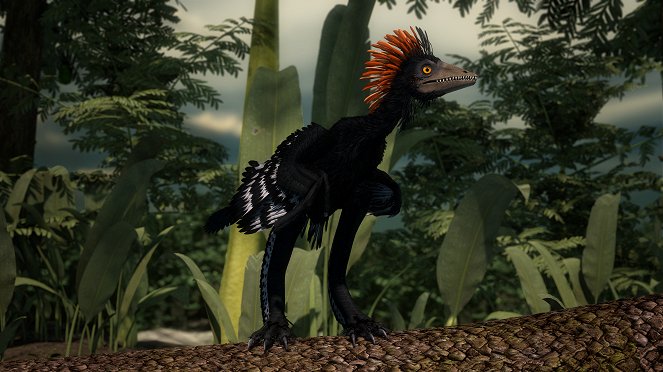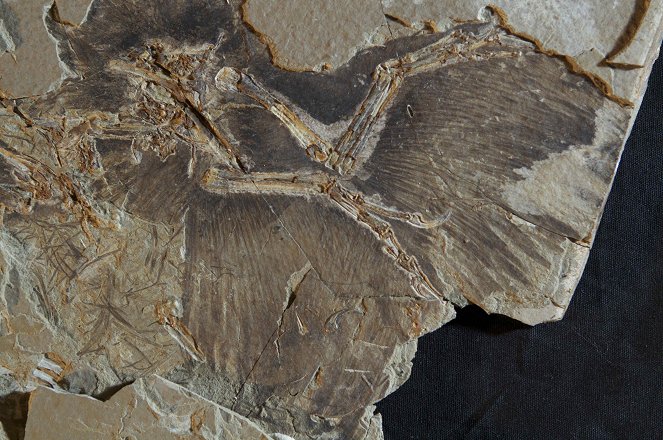Juonikuvaukset(1)
For hundreds of years, we thought dinosaurs ruled the planet as scaley, reptilian beasts. Huge lizards that terrorized early Earth. But new scientific advances are proving us wrong, and painting an entirely new picture of the dinosaur world. From the discovery of one—and then hundreds—of feathered, meat-eating dinosaurs in China, to a revolutionary new method of reconstructing original color from fossilized feathers, scientists are building a new picture of what dinosaurs actually looked like, how they behaved, and what their feathers were for.
The original feathered dino was found by a Chinese farmer in 1996. A rare find precipitated by a volcanic explosion that buried the creature in ash before it could decompose, the fossil provided a missing link between dinosaurs and birds. But it also sparked questions about how the dinosaurs used their feathers, and how and why feathers evolved. Scientists looked to modern birds for inspiration, and began careful examinations of the many feathered dino fossils that were being pulled from the Chinese soil. They found exciting evidence that feathers may have emerged for warmth as part of a larger shift in dinosaur physiology from cold-blooded to warm. They also found clues about the use of feathers for display and camouflage. Unfortunately, most of these potential uses relied on color and patterning, and scientists had no way to extract original color from hundred million-year-old dinosaur fossils.
Until 2006, that is, when Jakob Vinther, a graduate student at Yale University, made an unlikely discovery. Vinther realized that melanosomes, the containers that held pigment in feathers, could survive the fossilization process. So if he could get samples from the feathers of a fossilized dinosaur, he should be able to reconstruct its color. A trip to China and some delicate negotiation got Vinther and his team the samples they needed from a chicken-sized, feathered meat-eater named Anchiornis. After weeks of tedious lab work and the enlistment of world-renowned bird artist Michael DiGiorgio, they were able to recreate its startling colored coat, complete with grey body, white and black speckled arm, leg and tail feathers, and beautiful rufus red head crest. The colored crest was a clear indication that Anchiornis had used it for display—either to intimidate competitors or to woo a mate. But ornithologist Rick Prum was most intrigued by the speckled arm, leg and tail feathers, which are eerily reminiscent of the patterning of the modern Hamburg chicken. Once other samples are analyzed, he believes the differences in individual markings may help scientists determine the sex of the creatures.
The coloring of Anchiornis has opened up a world of possibility for reviving the color of other dinosaurs, and the wealth of new information about the feathered dinos has shattered perceptions of some of the most notorious and iconic dinosaurs. Top of that list is the infamous T-Rex, whose fearsome reputation as a lizard-like, cold-blooded killer is being shattered by images of fuzzy babies, flamboyant patches of eye-catching feathers, stay-at home dads, a birdlike posture, and a shocking genetic connection to today's common chicken.
(jakelijan virallinen teksti)
Kuvagalleria (3)
Kuva © Prima Zoom

Kuva © Prima Zoom

Kuva © Prima Zoom
